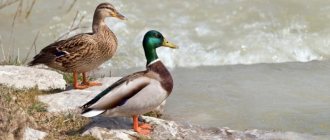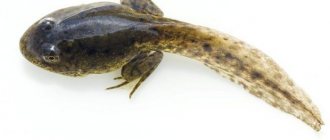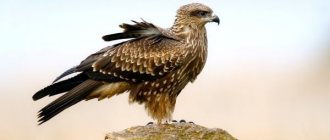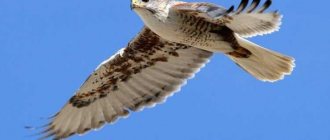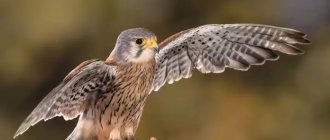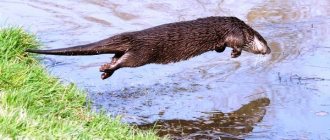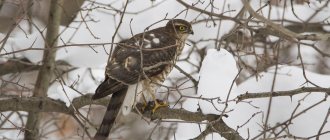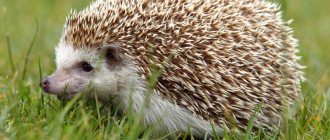- February 19, 2020
- Miscellaneous
- Igitkhanyan Alevtina
Determining the sex of a bird can be quite difficult, especially if the hunter does not have special knowledge, much less experience in this area. This recommendation also applies to waterfowl. Many varieties of ducks do not have sufficiently pronounced features that can quickly and accurately indicate their gender. Therefore, to help all novice poultry farmers, experts offer several important characteristics. It is thanks to them that you can easily distinguish a male from a female. For example, the photos of a drake and a duck included in this article allow you to clearly see the differences in the colors of the birds from each other. Appearance is the main feature by which you can distinguish them from each other.
general characteristics
Ducks belong to a large, widespread family of waterfowl that includes about 150 species . They all have a streamlined, wide body, flipper-like membranes on their paws and a flattened beak. The plumage of ducks is completely waterproof, which is facilitated by fatty lubricant secreted by the coccygeal gland.
However, the bird needs to wash its feathers thoroughly on a regular basis. To do this, they run through the water, loudly flopping their wings. Ducks that have not bathed for several days may drown the first time they hit the water or will have difficulty swimming, being partially submerged in the pond. Dirty feathers also interfere with flight. Birds that have bathed come ashore and shake themselves off well, which helps restore the structure of their feathers, which have been damaged by water. After this, they use their beak to catch fat from the coccygeal gland and apply it to the feathers.
Nutritional Features
Most species of ducks feed on plant food , and in some cases, animal food:
- The diet of wood ducks includes grass and roots dug from the ground.
- Steamboat ducks and marine duck species dive well and find food at the bottom of reservoirs. They feed on crustaceans and mollusks.
- Diving ducks dive into the water until only their tail remains on the surface. Their diet includes zooplankton, algae, worms, mollusks, and insects.
- Mergansers behave more efficiently under water, so they easily catch sea fish for themselves.
Most ducks feed on the surface of the water, capturing water in their beaks, where it is filtered, leaving various algae, plant particles, small invertebrates and plankton behind.
Ultrasound method
This is an unusual, but quite effective way of determining gender. You will need special equipment in which you can adjust the ultrasound frequencies. Certain waves will only attract “boys”, while others will only attract “girls”. This approach is very convenient for a large number of birds, so as not to study each individual separately, but to immediately group birds of the same sex.
Advice! Each duckling should be marked so that in the future it is easy to distinguish their gender.
Mallard - photo
This is the most common breed, which is familiar to all hunters. The large river bird has a long, short body, reaching a length of 60 cm . The main differences in its appearance are:
- Female ducks have a slightly variegated, stormy coloration, which allows them to successfully hide in the reeds.
- Emerald-pearl coloring of the head and neck of drakes. Their neck part is separated by a white rim, and the feathers on the head and neck have a smooth structure.
- Orange paws and yellow beak.
- Ash gray sides, back and belly.
The drake is lighter than the female and always swims after her. At the same time, when giving voice, the female only quacks, and the drake’s voice resembles a metallic “chewing.”
Mallards arrive in temperate latitudes in early spring, immediately after the snow melts. And already at the beginning of March the hunting season begins for them.
In early spring, gathered in small groups, birds graze in the grass. They rarely go out on the water until April. In autumn they prefer marshy areas with abundant vegetation.
In mid-April, ducks go to plant their eggs in the reeds , and at this time drakes swim carefree in open reservoirs or areas of land. Birds of this breed are not distinguished by caution and intelligence, which hunters take advantage of and shoot them in large numbers.
Ducklings appear in August, begin to grow quickly and by the end of September gain slaughter weight. That is why the second hunting season begins from October to November.
Care
It is important to know the features of bird care to create maximum comfort when breeding domestic ducks. The farmer must make sure that in the room for keeping ducks the thermometer does not drop to 5 degrees Celsius, otherwise the birds will not only stop producing eggs, but may also get sick.
In winter, sunlight can be replaced by artificial light sources. Bedding for animals should not be thinner than thirty centimeters.
It is important for ducks to walk regularly; in the summer, you can equip a pond for them. The fence on the ground should be higher than a meter, and under water - at least half a meter. Otherwise, the bird may dive and escape from its owner.
Note!
- How to choose a mattress and not make a mistake? Review of the best models, size table
- Cotton blanket: advantages and disadvantages, rules of choice and care
- Review of ideas for exterior home decoration
In winter, you need to clear the area of snow and cover it with straw. When the temperature is below ten degrees, ducks should not be released outside.
Chirki - photo
The name of the birds comes from the “teal, teal” sound they make. This type of duck can reach 40 cm in length, with the female being smaller than the male. A few weeks before the mating season, the drakes begin to be brightly colored. In the spring they become gray again, inconspicuous, and no different from females.
There are the following types of teal:
- Teal Gadget. The gray female has a long beak, at the base of which there is a whitish spot on the side. Drakes are distinguished by ash-gray wings on top. During the mating season, their head becomes a reddish-brown color, and a white stripe runs from the eye to the back of the head. Teal drakes can be distinguished by their lighter plumage and the sound “kr-kr-kr-r-r-r-r-r” produced, which is pronounced along with the raising of the head. The female makes a simple high-pitched quack.
- Teal-whistle. This is the smallest species of duck. The female is gray, with dark shoulders and a spot on her head. The drake is distinguished by a white stripe on the shoulder and a whitish-yellow area between the end of the tail and the abdomen. The flight of these birds is maneuverable and fast. A flock of whistling teals is capable of quickly making synchronized turns.
- Marbled teal. In Russia it is found in the Caspian region and the Volga delta. It is a very rare species. Adults reach 400-600 grams and have a fearless, trusting character. They lead an aquatic lifestyle most of their lives, so they swim well and dive deeply. The population of this species is declining due to the destruction of small bodies of water with large vegetation, which are the natural habitat of the birds.
- Teal-kloktun. The most noble representative of teals, which is an honorable trophy among hunters, since it flies into Russian territory very rarely. It nests mainly on Sakhalin Island and in the region of Central Asia. The head of the teal is decorated with beautiful golden-emerald abstractions.
Reproduction and lifespan
The bird makes nests right in the middle of the lush lakeside vegetation, making its own homes out of reach of humans and predators. Once they reach the age of one year, mallards are ready to mate and breed. Pairs form directly in the autumn, and they usually spend the winter together. The breeding season depends on the habitat, and usually begins from mid-spring to late summer.
The drake and the female work together to build a nest, and it must be close to water, and it is a small depression, the bottom of which is covered with the remains of dry vegetation. mallard eggs are born , he leaves the home to molt.
Mother mallard with chicks
mallard ducklings begin to emerge a little less than a month later . Literally 10 hours after birth, the mother takes the young offspring with her to the water, and within two months the chicks begin to live independently. In the wild, the lifespan of a mallard is 15 to 20 years. In captivity, birds can live up to 25 years or more.
Gray duck - photo
This breed is smaller than the mallard. Of all the ducks, only the gray duck has a drake with a natural dull color , due to which they are often confused with females during hunting. In flight, birds are distinguished by a bright white “mirror” and a sharp whistling of their wings. The “mirror”, which is difficult to see on the water, is black and white in females, and black, white and chestnut in males.
The drake differs from the duck only in its scaly gray chest and grayish-streamy sides and back. Both he and the female have a brown head. At the same time, the uppertail and undertail of the duck are red, while those of the male are black. In appearance the female is similar to a mallard. It differs only in its yellowish-orange color.
By gender
To determine sex, this method is the most accurate and correct. So, for example, if by external signs and characteristics it is possible to determine the male and female when they are already grown up, then this method allows you to very quickly determine the sex of newly hatched ducklings.
To determine whether it is a female or a male, you need to place the chick in your palm and lightly pull its skin, this should be done from the cloaca to the abdomen. If after these manipulations you find two round sprouts, then it is a female. As for males, they have a rudimentary male reproductive organ (pseudopenis).
This method is very good for determining the sex of a bird. However, it may not be possible to distinguish a drake from a duck the first time. Therefore, in order to distinguish a male from a female, you need to practice a little. Well, if it’s not possible to practice on the birds themselves, you can try studying photos of a drake and a duck.
Shoveler - photo
Already from the name it is clear that ducks of this species have a spade-shaped, widened beak. Among all the ducks, the Shoveler Drake is the most beautiful . It is different:
- red belly and sides;
- white breasts;
- dark green neck and head;
- bright yellow eyes;
- bright orange paws.
The “mirror” of the male’s wings is bright green, the front wings are blue.
The brown-red female has brown eyes. She makes rhythmic sounds similar to “pi-it, pi-it.” The drake quietly and nasally utters “sok-sun, sok-sun.” The Shoveler is one of the most wary duck species.
Habitats
The gray duck is a species of bird that is considered to be related to wigeons and mallards.
The bird came to mainland Europe due to migration from Asian and Middle Eastern countries. The gray duck prefers temperate latitudes. These hardy birds are able to cover vast distances with the onset of the cold season, so their habitat has rapidly expanded from year to year: to Western Europe, the islands of the Atlantic Ocean and North America. Gray ducks have become well established in many regions of the Russian Federation. Russian lands account for approximately two-thirds of the entire population of the species, which has settled in the northern strip of Eurasia.
During the nesting period, gray ducks settle next to small calm bodies of water, swimming along shallow coastal areas where emergent vegetation creates shade. As soon as the bird has offspring, it migrates to deeper water bodies with more open water. The gray duck is a migratory bird. With the onset of cold weather, migration begins to the sea coasts in a southern and western direction from the nesting sites.
Depending on the distribution environment, a clear pattern is identified in the migration route. Thus, birds nesting in the northwestern regions of the Russian Federation and the Baltic countries winter in Western Europe.
Gray ducks, which have chosen the expanses of the southern Urals and the Lower Volga region, go to the south and southwest for the winter:
- Balkans.
- Countries on the shores of the Caspian Sea.
- Asia Minor.
The most extensive areas for enduring adverse weather conditions are in North America: gray ducks choose temporary shelters from southern Alaska to Texas. The eastern United States is less favorable for wintering birds. Gray ducks reach only the southeastern states and some Gulf Islands.
Orca - photo
Large wild ducks, whose weight can reach one kilogram, can grow up to 50 cm . The dark brown female killer whale is very similar in plumage to the wigeon duck. You can distinguish it by its long gray beak. During the mating season, the drake is so brightly colored that it outshines the duck. It has a dark green head, collar and sides. It has a white throat, bronze crown and a white, black or yellow cloaca area. In flight, killer whales have a blackish “mirror”, which is bordered by a white stripe along the inner edge.
This beautiful duck is very widespread, as it is often kept in captivity. Its breeding grounds are in eastern Asia and many parts of Russia, northern Japan and the Kuril Islands, northern China and parts of North Korea. Killer whales live in wet meadows, plains and lakes.
Wild ducks are constantly moving and get their own food, so they are light in weight . But, despite this feature, they are the desired prey of hunters. There is a wide variety of ducks to choose from in the wild. Some of them are hunted for tasty meat, while others are hunted for beautiful plumage.
Beautiful drakes
Life cycle
Wild ducks (mallards) are among the record holders for longevity, as they can live up to fourteen years. How long does a domestic duck live?
Domestic ducks generally live 2-2.5 years or until the farmer decides to put his pet under the knife.
Compliance with the temperature conditions specified in the article and regular feeding will help ensure good health of the duck and significantly extend the life of the feathered beauty.
Reasons for the decline in the number of Brazilian mergansers
The number of Brazilian mergansers has been declining rapidly over the past 20 years (three generations), due to the loss and degradation of habitats within its range, as well as increased construction of hydroelectric dams, the use of areas for soybean cultivation and mining.
It is possible that Brazilian mergansers still survive in treeless, undisturbed areas along the river in the Cerrado.
River pollution due to deforestation and agricultural expansion in the Serra da Canastra region and diamond mining have led to a decline in the number of Brazilian mergansers. Previously, this species was hidden in gallery forests, which, although protected by law in Brazil, were nevertheless mercilessly exploited.
Edible or not?
Merganser duck meat is edible. Due to the fact that the bird feeds on fish, it has a slight fishy smell and is dark in color. Some hunters believe that there is no point in hunting this wild bird. If you remove the skin with a thin layer of fat, underneath it will be a not very large meat carcass. Merganser meat is a bit tough, but to achieve better taste, it is better to cook it with the meat of another bird. But this is just the opinion of some hunters.
